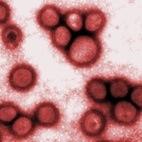The Answer Continued
Way back in 1983 we first started recognizing episodic fevers in Shar-Pei often associated with a swollen, painful hock joint. Later on it was observed that an early-onset kidney failure occurred in many of these dogs as well. I remember many individuals, including myself, remarking that this has to be associated with the wrinkles in some way and now we know it does. An important article was recently published in March, 2011, entitled “A Novel Unstable Duplication Upstream of HAS2 Predisposes to a Breed-Defining Skin Phenotype and a Periodic Fever Syndrome in Chinese Shar-Pei Dogs”, Mia Olsson et al. It...




